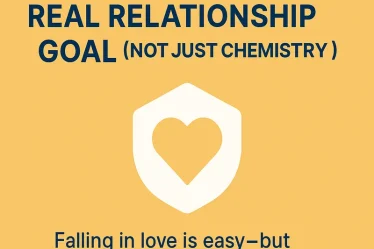
Modern dating is changing faster than ever. Swiping, ghosting, breadcrumbing—and now, situationships. If you feel like you’re stuck in something that’s more than a fling but less than a relationship, you’re not alone. This gray area has become so common that it’s earned a name—and a reputation.
In this article, we’ll break down:
- What a situationship really is
- Why it’s become so popular in the U.S.
- How to tell if you’re in one
- The emotional toll it can take
- How to navigate or exit one with confidence
- Whether it could ever turn into a real relationship
Let’s dive in.
What Is a Situationship?
A situationship is an undefined romantic connection that exists somewhere between a casual hookup and a committed relationship. There’s usually emotional intimacy, regular communication, and perhaps even exclusivity—but no clear label.
Unlike a one-night stand or a long-term relationship, a situationship thrives in ambiguity. You might act like a couple—hang out, sleep over, text every day—but when it comes to “What are we?” the answer is usually vague or avoided entirely.
According to relationship experts:
“A situationship is a relationship that lacks boundaries, structure, and clarity.” – Dr. Carla Marie Manly, psychologist and author
Why Situationships Are on the Rise in America
The rise of situationships in American dating is no accident. Several social, cultural, and economic forces are fueling this trend.
1. Dating Apps Changed the Game
With endless options at our fingertips, many people treat dating like shopping. This “paradox of choice” makes commitment feel risky or unnecessary.
2. Fear of Commitment
In an age of self-discovery and independence, many people—especially Millennials and Gen Z—are afraid of “settling down too soon.”
3. Career and Financial Pressure
Delayed milestones like home ownership or career stability push traditional relationship goals further out of reach.
4. Emotional Convenience
A situationship offers emotional connection without the pressure of commitment or accountability.
Stat to note:
A 2023 Pew Research study found that 42% of young adults have experienced some form of non-traditional romantic relationship—including situationships.
Signs You Might Be in a Situationship
Not sure if you’re in a situationship? Here are some classic signs:
- 🕒 Inconsistent communication and plans
- 😶 Lack of deep emotional conversations
- ❓ No label, despite frequent interactions
- 🤷 Uncertainty about the future
- 🔒 You’re not exclusive—but it’s never been discussed
- 🚪 You feel anxious but afraid to ask “what are we?”
If you constantly second-guess where you stand, chances are high that you’re already in one.
The Emotional Toll of Situationships
At first, a situationship might feel fun and freeing. But over time, it can take a serious emotional toll.
Common Effects:
- Anxiety from the lack of clarity
- Low self-esteem due to feeling “not enough” for a label
- Confusion about your emotional needs
- Emotional burnout from overinvesting in someone who may not reciprocate
“Emotional limbo can be more draining than a breakup,” says dating coach Lily Womble.
And for people seeking real commitment, staying in a situationship can be like treading water—you’re expending energy, but not moving forward.
How to Navigate or End a Situationship
If you’re stuck in the gray zone, it’s time to get clear with yourself first—and then with the other person.
🔑 5 Steps to Handle a Situationship:
- Assess what you really want
Are you looking for commitment or companionship? - Open the conversation
Use “I” statements: “I’ve been wondering where this is going for us.” - Be honest about your needs
Don’t downplay your desire for clarity just to avoid discomfort. - Accept their answer
If they’re not on the same page, believe them. - Walk away if necessary
It’s better to grieve a non-relationship than lose yourself in one.
Helpful tip: Practice your thoughts in a journal or with a friend before having the talk.
Can a Situationship Turn Into a Real Relationship?
Yes, but it’s rare—and it requires mutual interest and a shift in mindset.
Look for these green flags:
- They initiate conversations about your future
- You’re becoming emotionally vulnerable with each other
- They express a desire for exclusivity or deeper connection
However, if you’re constantly trying to “convince” someone to choose you, it may be time to move on.
✅ QUIZ: Are You in a Situationship or Something More?
Answer Yes or No to each question:
- Do you spend time together but avoid discussing feelings?
- Have you been seeing each other for months without a label?
- Do you hesitate to bring up exclusivity?
- Do you feel anxious or confused after you hang out?
- Have friends asked, “So, what’s going on with you two?” and you didn’t know how to answer?
Results:
- 4–5 Yes answers: You’re almost definitely in a situationship.
- 2–3 Yes answers: There’s ambiguity—time for a talk.
- 0–1 Yes answers: You likely have more clarity than confusion.
Conclusion
Situationships have become a defining feature of modern American dating. While they offer emotional connection without pressure, they can leave you stuck in limbo if your needs aren’t being met. By recognizing the signs, understanding your emotional needs, and setting healthy boundaries, you can reclaim clarity in your romantic life.
Whether you’re navigating a situationship, ending one, or looking to turn it into something real—remember this: you deserve love that doesn’t confuse you.



